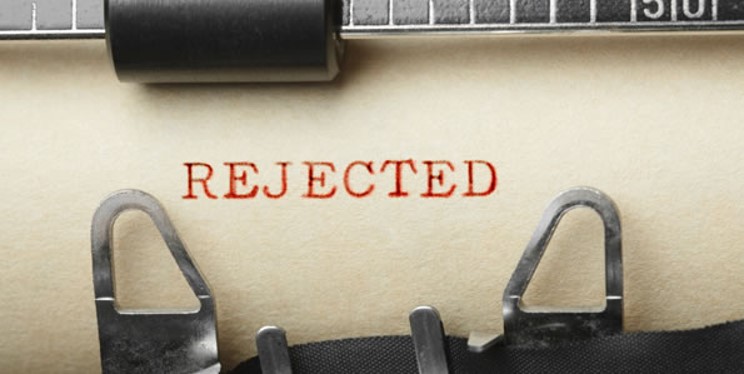You’ve finally done it. Early mornings and sleepless nights spent staring at a computer screen. You’ve pined, labored, edited, and re-edited every phrase, every comma, until at last you are satisfied there is nothing left to be done. You click “submit” and your masterpiece is released into the ethers. Surely literary greatness or at the very least publication is in your imminent future. Excitedly, weeks or months later, you open your inbox or mailbox (to a chorus of celestial angels) and discover? Yes, my friends, the Dear John letter.
Welcome to the world of literary rejections! Just when you believed writing, editing, and submitting your work was the biggest hurdle, enter Mr. Nasty, the unseen editor believed to be the nemesis to your success. The air is let out of your proverbial balloon and you find yourself swearing (literally or figuratively) that you will never, ever put yourself or that stellar piece of writing out there again.
If you are wondering where the idea for this blog came from, it was my recent experience of being accepted and rejected all in the same week. For those of you who were around in the 1970’s when the opening montage for The Wide World of Sports showed in one frame, a triumphant medal winner, the next, a downhill skier tumbling head over skis with the voiceover, “The agony of defeat.” Yes, it was that kind of week.
Ok, calm down. Rejection is as old as the hills and everyone has experienced it at one point or another. Think elementary school playground, or high school. Then again, maybe not. The literary and creative world guarantees no success but weighs heavily in favor of the artist who, despite repeated rejections, climbs back into the ring, despite the risk of a black eye or humiliation. Rocky Balboa has nothing on E. E. Cummings, Madeleine L’Engle, James Joyce, or the author of Harry Potter, J.K. Rowling, who was rejected 12 times and told “not to quit her day job,”
But this is YOU and YOUR work. Good point. Perhaps it would be more helpful to learn how other writers respond when rejection letters threaten their confidence.
- Katrina Vandenberg (executive director of Runestone) has this this to say: “So often it’s not the quality of the writing, but a lot of the time it depends on who sees it. It’s all really a numbers game. If you’re getting acceptance more than 10% of the time, you’re not aiming high enough.”
- Elizabeth Gilbert, (author of Eat, Pray, Love) says: I collected only massive piles of rejection notes for years. But I also thought: ‘Hey, someone has to write all those stories: why not me?’ It has never been easy for me to understand why people work so hard to create something beautiful, but then refuse to share it with anyone, for fear of criticism. Wasn’t that the point of the creation – to communicate something to the world? So put it out there.
- J.K. Rowling, (creator of the magical world of Hogwarts) recently posted her rejection letters on Twitter to encourage other writers. She received “so many rejections for her 1999 book Chocolat, that she piled them up and ‘made a sculpture.’”
- Paul Patane, (fellow Runestone student editor) recently posted this on Twitter: “Woke up to a new rejection letter in my inbox. What a way to start a week.” It was his first response/rejection to his new flash piece so he wasn’t taking it too hard. “It was a nice rejection at least. They asked for more from me which means it got some real consideration. Rejection doesn’t really bother me. I accept that I’ll fail more than I succeed when it comes to publishing.”
- Madeline Reding, fellow student, recently received her first rejection email: It wasn’t so bad, since this particular journal was a long shot, anyway. But we’ll see how it goes once I start getting responses from some of the places I’m really hoping about.
So it would be a cop out if I didn’t share my own thoughts on rejection. I would be lying if I said rejections don’t bother me, yet the more I submit and get used to the odds of rolling the literary dice, the less daunted I become at the likelihood of rejection.
I keep a folder in the front of my file cabinet with “successes” and a lovely, floral folder placed in the back with the “sorry but your work isn’t a good fit for our journal.” Perhaps the editors are doing me a favor, believing more revisions are needed before my work meets the light of a day. They become a friend, not foe, and move me closer to my goal: publication.
In order for the third (or thirtieth) submission to be a charm, you have to have done it two (or 29) times before. So write, submit, write, submit. And in the meantime, do something creative with those rejection slips, like wallpapering your bathroom. It will serve as a reminder of just how far you’ve come.
Meet the blogger:
 DJ HILL is a poet, freelance writer, and photographer. Her work has appeared in The Atrium, Century Times, Fulcrum, Red Flag Poetry, and The View from Here: Poetry to Help You Soar, as well as Maple Grove, Southwest Metro, St. Croix Valley, and White Bear Lake Magazines.
DJ HILL is a poet, freelance writer, and photographer. Her work has appeared in The Atrium, Century Times, Fulcrum, Red Flag Poetry, and The View from Here: Poetry to Help You Soar, as well as Maple Grove, Southwest Metro, St. Croix Valley, and White Bear Lake Magazines.


